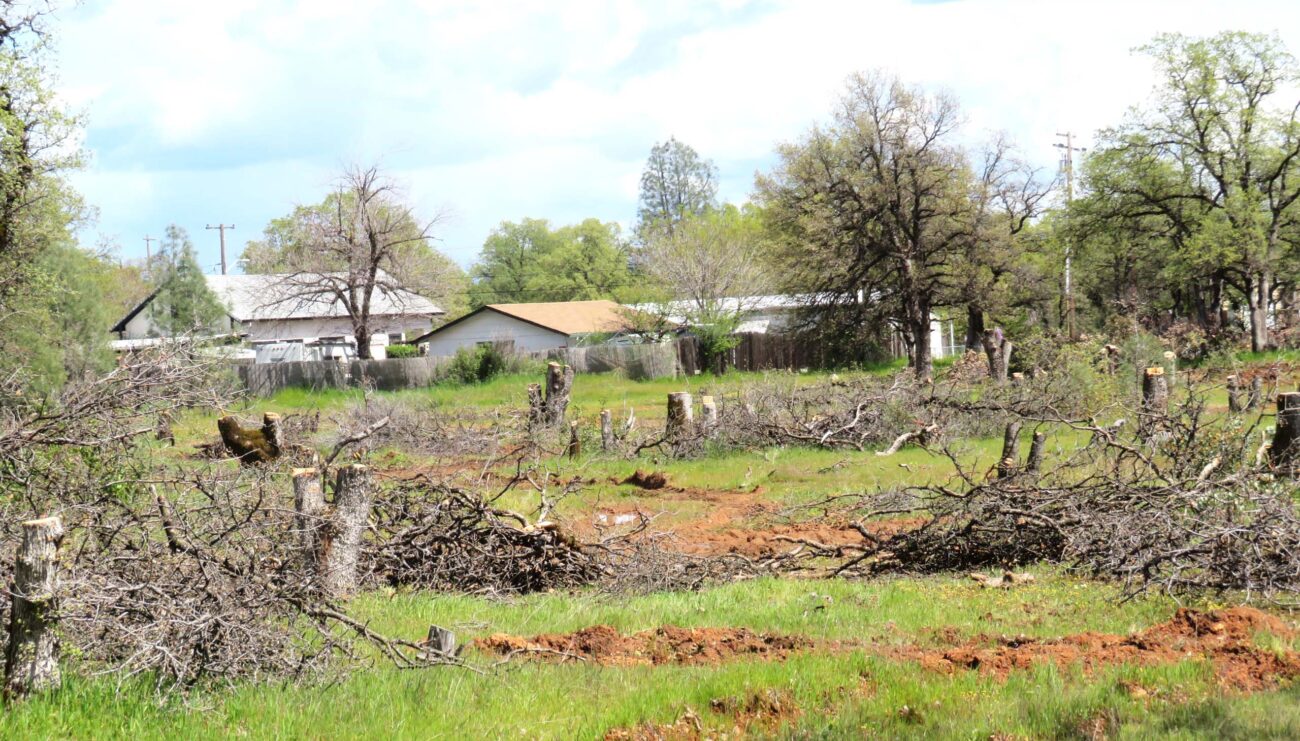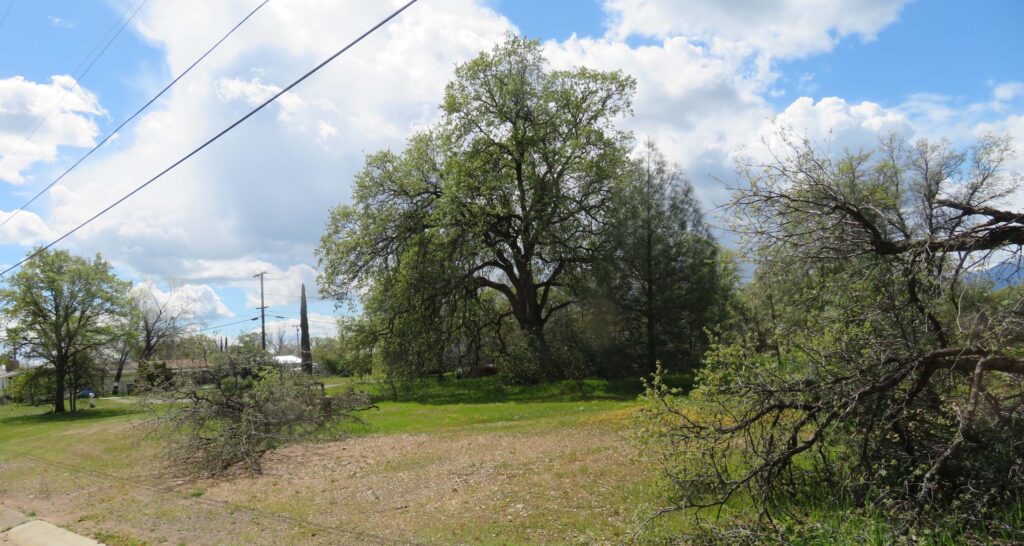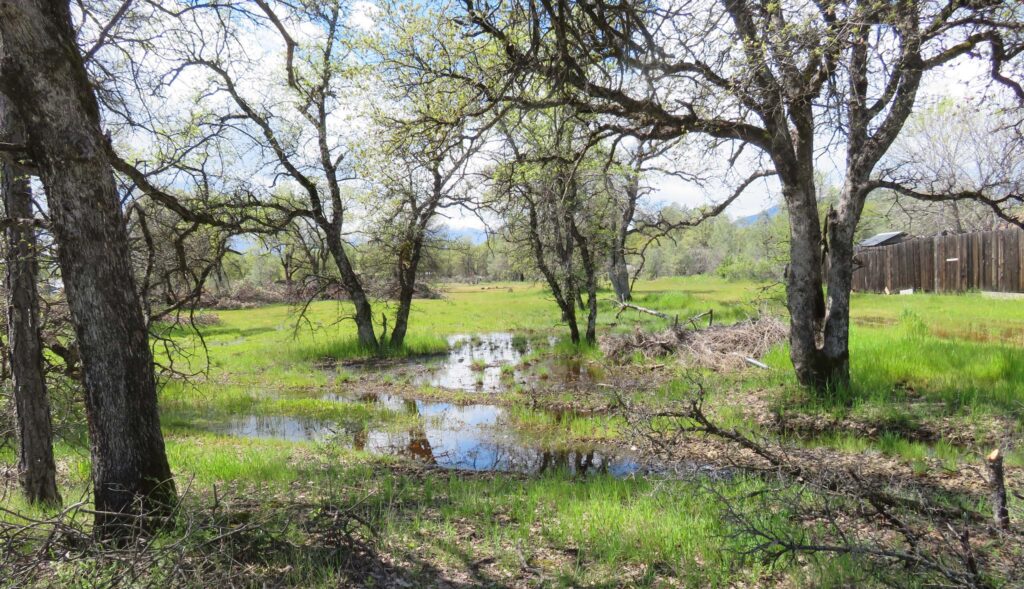
Developer Cuts Down 65 Oak Trees without a Permit or City Approval
Zinco LLC is proposing to subdivide a 4.6-acre parcel in northwest Redding to create 16 residential lots. The property is on Jordan Lane, just off Lake Boulevard near Keswick Dam Road. The project is under review by the Planning Department and, because a zone change is involved, the proposal must be reviewed and approved by both the Planning Commission and City Council.
I previously visited the project site a year ago, when it was first proposed for subdivision, and found it to support a beautiful blue oak woodland with many scattered healthy trees of varying sizes. As the project was infill development, I hoped that Shasta Environmental Alliance (SEA) could convince the Planning Commission to require saving as many oak trees as possible when it came up for approval.
A few weeks before the project was to be reviewed by the Planning Commission, I took a drive up to the site and saw that many of the oak trees had recently been cut and lying on the ground. Someone was burning the slash. I talked to a man who appeared to be the foreman or owner and asked if he had a permit to cut the trees. He said he didn’t need a permit as he knew the six trees he needed to save. I took a few pictures and called City Planner Danny Castro and told him what was happening. He visited the site and confirmed the trees were cut without authorization; the Planning Department was not pleased and immediately contacted the owner and told him to stop all work at the site.

It turns out that the owner had applied for a permit but was told he could not cut the trees until the project was approved by the Planning Commission and City Council. Because the owner willfully ignored City requirements, the Planning Department is recommending that the developer pay the maximum penalty allowed under the Tree Management Ordinance ($2,000 per tree) and that the proposed development be placed on hold for two years.
Someone went on the property and reported to SEA that 65 oak trees had been cut; however, we do not know if they were all over six inches in diameter, which is the minimum threshold for protection under the current tree ordinance. At the April 9 Planning Commission meeting, City Attorney Christian Curtis stated he needed to study the project further before the Planning Commission can make a decision on the penalties for violations of the Tree Management Ordinance.
Other problems with the proposed development that have been identified by SEA are that the project does not qualify for an “infill” Categorical Exemption under the California Environmental Quality Act because a rezone is proposed. Although the City prepared a short Categorical Exemption for the project, a more thorough environmental review is required. Further, the site appears to support wetlands and/or other “waters of the State of California,” and any loss of such waters requires mitigation. Another problem is that the biological study prepared by the applicant’s consultant identifies two rare plant species on the site, which triggers the need for protection and/or mitigation. Although these two plants do not grow anywhere near Shasta County, because the environmental record states that they are present, some action must be taken before the City can rely on the biological report for its environmental review; hopefully, a new biological report will be prepared by a qualified company. The company that prepared the current biological report is Wildland Resource Managers, the same firm that prepared the highly contested biological review for Patrick Jones’s gun range in Millville Plains, the High Plains Shooting Range.

More Conservation News
Please see Shasta Environmental Alliance’s May 2024 Newsletter for more conservation news, issues, and events! ~David Ledger, Conservation Chair
